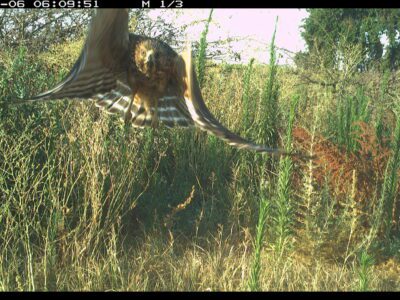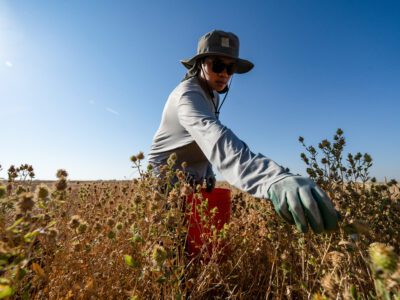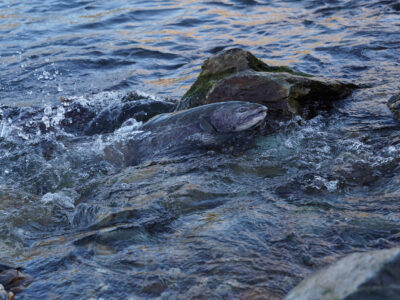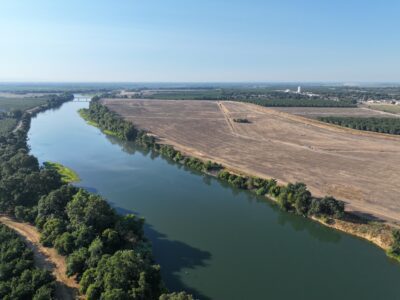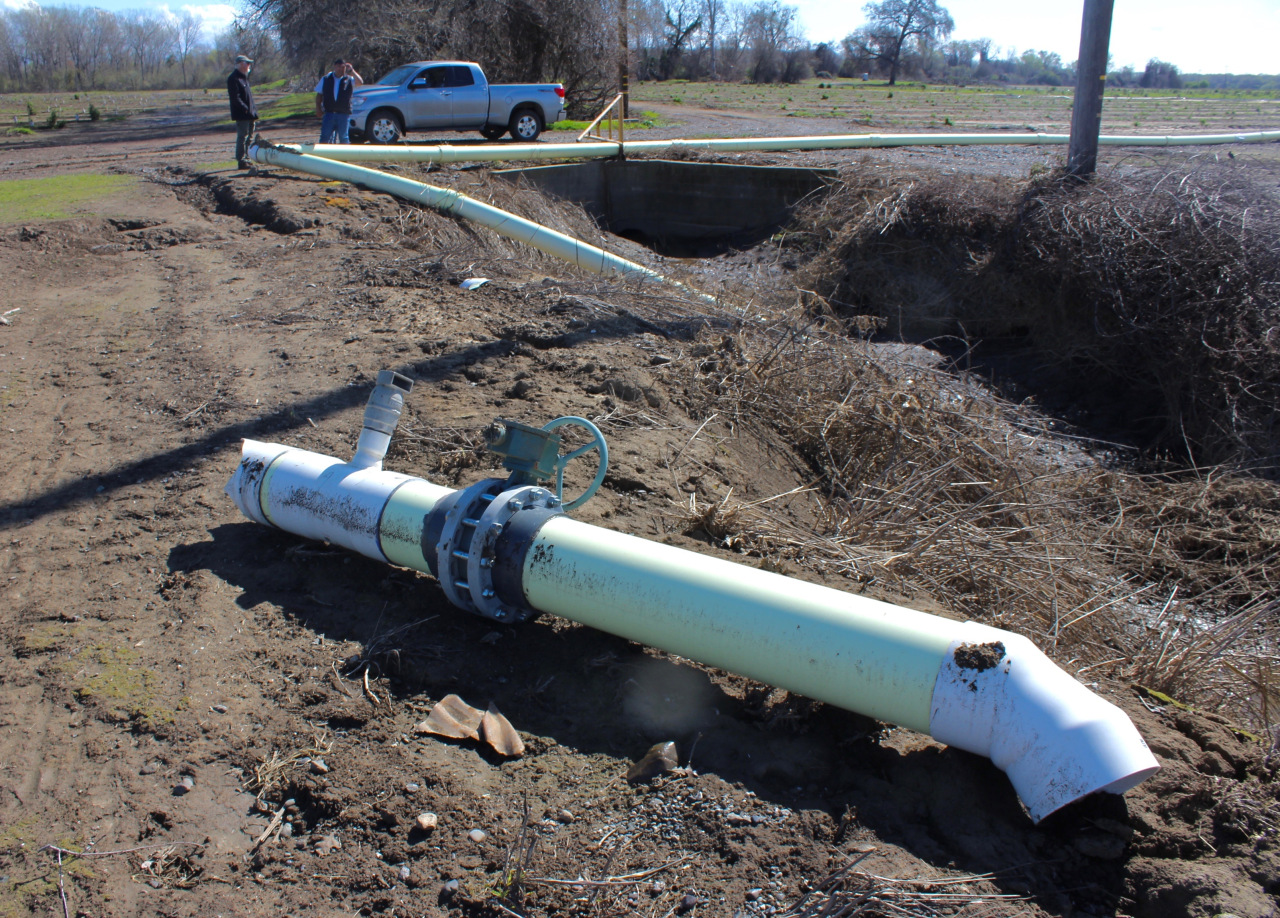
By Steve Schoonover, March 26, 2019
HAMILTON CITY — As the Sacramento River rose in late February and early March due to a series of storms, it spilled over and flooded several hundred acres of recently planted fields south of Hamilton City.
Just the way it was planned.
The river poured through a gap that had been opened in the old J Levee and flooded a habitat restoration project between the riverbank and a new levee that had been built, set back from the river a mile or so.
The water had receded during a tour Thursday, and the young plants, by and large, looked fine. The human-built infrastructure, not so much. The Glenn County road along the south side of the project had been gouged by the floodwaters, and the irrigation system was trashed.
The 925-acre flood plain restoration project by River Partners had been under as much as 5 feet of water, according to field manager Ruben Reynoso. “That’s how high we were pulling the milk cartons out of the trees,” he said, pointing to the mature plants in an older restoration project across the road.
The milk cartons were placed around the 192,000 native plants River Partners put in the ground over the last couple of years. The cartons protect the young plants from sprays used to kill weeds. The course of the swiftest part of the flood can be traced by areas where the cartons washed away.
As for the irrigation system, it will take $22,000 to $28,000 to repair and a couple of weeks work, Reynoso said. Many of the drip irrigation lines had washed into a fence on the south side of the road, and one main line — that had been buried — was pulled out of the ground and buckled.
“I could drive over it in my pickup,” Reynoso said of the 8-inch plastic pipe, “but the water came through and pulled it out of the ground and snapped it.”
The need for repairs wasn’t unexpected — it is a flood plain restoration after all — but River Partners is holding off on the work a couple of weeks, just in case there’s another flood.
But the plants look fine, despite having all that water flowing over them. Some of them are a little tilted. In a few cases, the original plant was dead, but it was surrounded by its thriving children, seeds that had taken root.
River Partners President John Carlon said all the plants have their own strategies for survival, evolved over eons on the flood plain. Some have flexible stems and bend, while others snap off and re-sprout from the root when the waters recede.
At the peak of the flood, he said the plants would be lying over, hugging the ground. “That changes the dynamic of the flow,” Carlon said. Rather than churning over itself — which he said water tends to do when running across a bare surface — the lower level of the water is slowed by the plants, but the upper layer actually speeds up.
But when the water hit the road, it churned and chewed up the asphalt. Yet there’s very little visible erosion in the restoration area. When the water moved on, the plants popped back up, but the road’s still a wreck.
“This green infrastructure is resilient,” Carlon said, pointing to the vegetation on both sides of the road. “And look what happens with hard infrastructure. It’s amazing that it doesn’t tear up the grass, but the asphalt …”
At the peak of the flood, there could have been 4,000 acre-feet of water on the new flood plain. The real benefit comes downriver, according the Carlon, because that diverted water reduces the crest of the flow trying to pass between the levees pinching the river, reducing the pressure on them.
But there are other benefits he said. Fish used the protection of the flooded plants to keep from being swept downstream. The water saturated the ground and probably gave a boost to local aquifers.
Another 500 acres north of Hamilton City are also to be restored as flood plain and part of the $90 million project to rebuild the 7-mile levee. It’s the first project undertaken nationally by the Corps of Engineers that was planned to both improve flood safety and restore habitat at the same time.
The new levee north of Hamilton City is largely done, and is visible from Highway 32. One middle section still has to be built, but $12.6 million was allocated by the federal government last year, which is enough to complete the work.
There is concern, however, that money might be among the funds being diverted by President Donald Trump to build a southern border wall.
If not, the levee could be completed in 2020, although the restoration work will take a bit longer.
See a video timelapse of the flooding.
See the original article in the Chico Enterprise Record.

